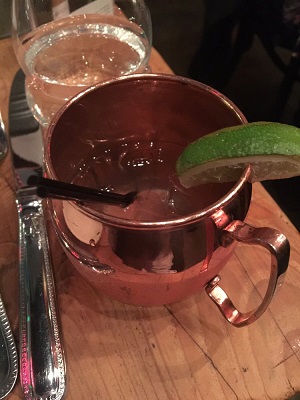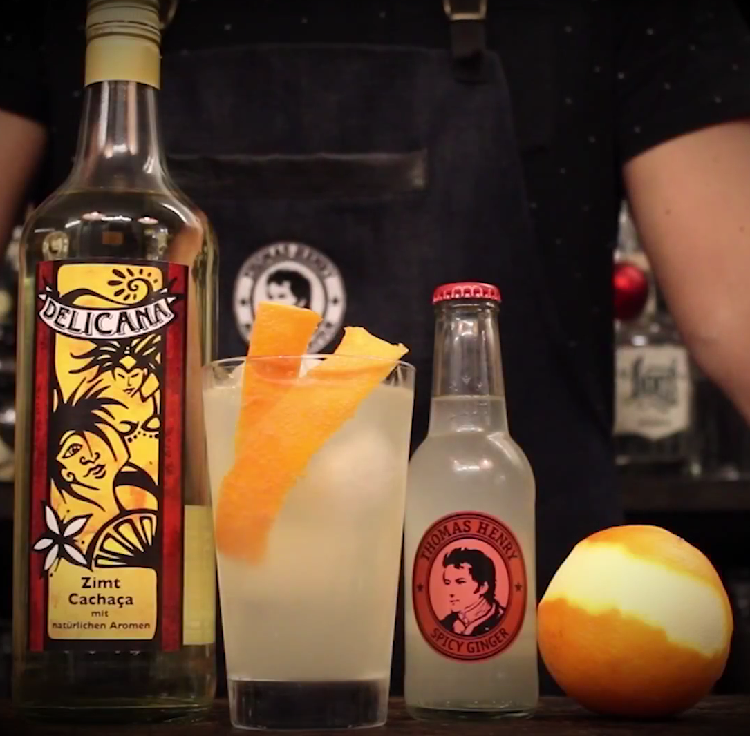The Brazilian Mule: How to Make It At Home
The Moscow Mule muddled on in obscurity for many years. Popular, sure. But hardly what anyone would call a phenomenon. The Moscow Mule was born of necessity in the lounge of the Cock n’ Bull Tavern in Los Angeles during the early days of World War II and for years it was more of a cocktail curiosity than the global phenomenon that spawned today’s topic, the Brazilian Mule. As such it owed much of whatever cache it could muster to its unique glass; which wasn’t actually a glass at all but rather a solid copper mug.
One of the creators of the drink, John Martin, was chairman of Heublein Brothers. He had recently bought Smirnoff Vodka brand and was intent of finding a way to make the traditional Russian drink more palatable to American consumers. Many historians are split on whether it was Heublein’s marketing budget or the copper mug that actually caused the drink to find a kind of cult following but find it it did and for several decades the drink remained a kind of niche cocktail, known to but a few bartenders and almost unknown to the general American population.
Mule + Internet = Worldwide Sensation
While the mule certainly had its fans it wasn’t until the invention of something called “The Internet” that it was finally and irrevocably lifted from obscurity. As more and more people came on line and more of more websites went live more people began sharing their favorite cocktails and somewhere along the line the Moscow Mule got swept up in what can only be called a kind of viral frenzy that saw word of the cocktail suddenly being shared in corners of the world both well-known and obscure.
As it was absorbed by cocktail lovers in each market each seemed to want to put their own spin on the mule and so regional variations began to spring up at an alarming rate: the Irish Mule, the Jamaican Mule, the Mexican Mule, the Mumbai Mule, the Shanghai mule and on and on. We’ve been doing our best to keep up with the global whirlwind that the mule has become and in that spirit we present today’s regional variation.
Making the Brazilian Mule
Once we became aware the Brazilian variation existed we of course spent a little time researching it and discovered that, like many other Moscow Mule variations this mule has its own sub-variations depending on who’s making it. There are also a fair number of people who are laying claim to being the inventors of the Brazilian Mule and one has to say some of the origin stories are fairly rich. Be that as it may our criteria for selecting the recipe we are featuring is the same as it has always been: we’re featuring it because it’s the one we like best.
Ingredients

Note: the Brazilian Mule recipe calls for Brazilian acai Liquor. The most well-known brand of acai liquor as of this writing is VEEV acai spirits. You may have to call around to a few liquor stores before you find it as it’s still a fairly new product to the US market. In addition, Angostura bitters are also called for and, seeing that they’re the product of a small spirits company in Trinidad and Tobago, they may be equally challenging to get your hands on but don’t give up. It’s out there. That said here is our ingredients list:
- 2 ounces VEEV acai spirits
- 3 ounces of ginger beer
- The juice of 1 freshly squeezed lime
- A dash of Angostura Bitters
- Lime garnish
- Ice
- Copper mug (chilled)
That last item is non-negotiable by the way and if you ever get a mule drink served in anything but a copper mug, be sure to send it back. Why’s that you say? Well, think of it this way; if you were in a bar and ordered a martini and they served it to you in a beer mug would that be okay? What if you ordered a glass of red wine in an Italian restaurant and it came in a brandy snifter? Would you say anything? Of course you would. And you’d be right to call them out on it.
With some drinks the vehicle they’re served in is every bit as much a part of the experience of the drink as the liquid itself. The snifter for instance is shaped the way it is to trap the aroma of the brandy inside while at the same time allowing your hand to warm the brandy. Likewise the copper mug allows you to keep your mule cool as a cucumber for longer, which is essential to complete enjoyment of this most versatile of cocktails.
That said let’s get on to the recipe, shall we?
Recipe
The Brazilian Mule recipe is simplicity itself:
- Pour the acai spirits into the mug.
- Fill the mug with ice.
- Add the ginger beer and lime juice.
- Add the Angostura bitters.
- Stir gently and garnish with a lime slice.
- Enjoy!
The VEEV Brazilian acai spirit itself can take a bit of getting used to. The taste is somewhat bitter and tart and marked by the presence of both pear and acerola cherries. On the other hand it’s a perfectly acceptable representative of the country itself with its unique and spicy cuisine that combines European, African and native South American influences.
Conclusion
As the Moscow Mule continues to spread across the globe, its reputation propelled ever forward by the winds of cyberspace, we’ll continue to keep an eye on new and exciting variations as they arise; including regional variants like the Brazilian Mule featured here as well as holiday variations like the Yule Mule and more. If you’re planning to serve our favorite cocktail at your next summer barbeque make sure you pick up a set of beautiful solid copper mugs. Visit our online store to browse our selection of moscow mule copper mugs, or drop into our brick and mortar retail outlet on Logan Court in Denver.
Explore our additional content to learn how to make these popular variations of the traditional Moscow Mule:

 Default Currency
Default Currency
